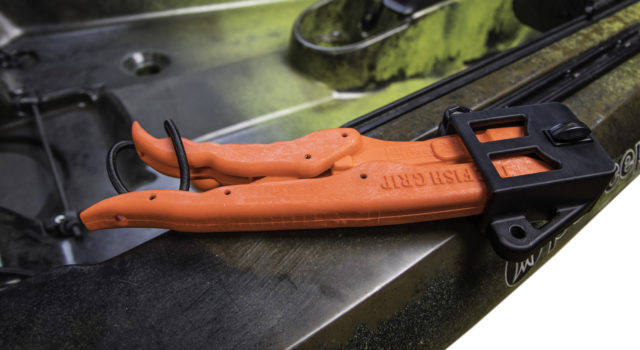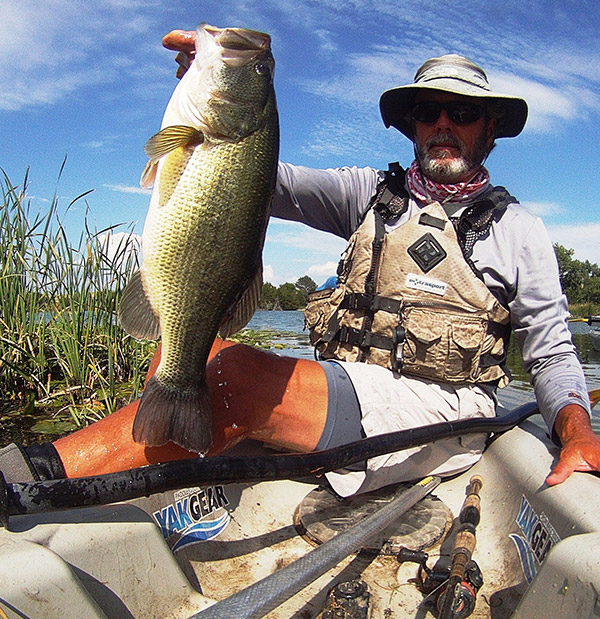Kayak Fishing in Fresh Water
What drives us to go kayak fishing? How do we get out there? As a youngster, I would do anything to get out on the water. I once built a wooden boat at my home and dragged it across a pasture to a local pond so that I could get to those spots nobody ever fished. Fast forward a few decades, and I found another way to the fish lingering in those spots that had not yet been explored — a kayak. Yes, those little plastic vessels you see on just about anybody of water across the country these days. They are everywhere!
I enjoyed the freedom on the water with the kayak as I explored area ponds and lakes. I found so many places that I could get to, and the water was clear enough to see down to my finned friends in abundance. The trick was to sneak up on them without spooking them and catch them before they knew what had happened.
The kayak wasn’t much, just a little enclosed (sit-inside) eight-footer with enough room for my legs. I soon progressed to an Emotion 10-foot kayak that was called a “sit on top,” which was much easier to fish from. All I took with me was an ultra-lite rod, a small box of lures and a pair of pliers. Of course, I had my paddle and always wore a PFD (personal flotation device) while kayak fishing, as I was a bit uneasy when it came to the possibility of capsizing. I have never capsized, but I’ve seen others who have. Wearing that PFD is so essential for safety, as is some other safety gear you should always have at hand.
Getting Hooked
When kayak fishing, I mostly used small jigs and would drop my line directly below me and witness the fish engulfing the bait. This is the part that hooked me — the “tug.” The tug of a fish on a fishing pole while paddling or pedaling a kayak is one of the most incredible feelings I’ve ever experienced. It’s a dopamine rush like no other!
How does one catch fish from these small plastic vessels? First, your positioning is most important. Whether it’s fishing a rock line or among the trees, your position to the target you cast will affect whether you hook into some fish. Always consider the wind direction and your location. For instance, if you are fishing along a line of rocks, you might start at the end from which the breeze is blowing and slowly drift along the bank as you cast. It’s a natural “trolling motor” of sorts. I like to position my kayak at about a 45-degree angle to the shoreline and work as the breeze blows me along. You will need to adjust yourself a few times, but it’s worth it.
In the trees, I like to use a pair of Fish Grips from a lanyard connected to my YakGear anchor trolley. I clip the fish grips to a small branch and stay in place easily. When fishing for crappie or bluegill, this method works well. Another method that catches fish in freshwater is positioning on weed beds. You will stay put very easily and can drop your line straight down through what I call the “blow holes.” These are places where fish are positioned just out of sight, ready to pounce on their prey. Throwing a frog on top of the vegetation can bring a huge thrill as well!
Remember to have your drag set for the size of the fish you are catching. A big fish can snap your line rather quickly when you’re kayak fishing. Be ready for a nice ride through the water when you hook into a big one. This is the fun part! Even a bluegill will make your kayak move.
The Gear
I like to use a shorter rod so that when I bring up a fish, it is very close to the kayak and quickly brought on board. My line is usually six-pound braid or fluorocarbon, depending on the visibility of the water. For bigger fish, I use a six-foot rod and spinning reel with a 15-pound braid and a 16-pound leader.
When freshwater kayak fishing, there are numerous techniques and species. It is always fun to not just target one. Whether it’s catfish, largemouth bass, bluegill or crappie, they all bring fun and excitement on every catch. One thing that’s important when landing a fish is making sure you have the same length of line out as the length of your rod. If you reel up too high, you run the risk of easily losing the fish.
As for your paddle, it’s a good idea to have it lying across your legs diagonally from the front to the back of your kayak. Always have it ready for positioning your kayak in the water. And don’t forget a leash, for that just-in-case moment.
Many people these days are “catch and release” fishermen. But if you are looking to produce food for your next meal, you might bring along a small cooler and have it half-full of ice, or keep the fish alive with a small aerator. Finding a local kayak fisherman is always a plus, and you can learn quite a bit from them in just one outing. There are local clubs across the country these days, and some offer numerous unique competitions.
Places to fish include small ponds, lakes and slow-moving streams or rivers. They all usually have fish and are easy to get to. The main thing is that kayak fishing is fun! The scenery will engulf your soul, and the great outdoors always produce glimpses of the wildlife that abound near the shores of your fishing spot.
YakGear Brand Ambassador Marty Hughes (aka Kayakjak), the passion for fishing started as a youngster fishing small freshwater ponds in Southern California and combing the area beaches with a surf rod. Growing up as a military child often put him in new environments with unique fishing challenges. Marty has lived in Nebraska since 1976 and graduated from college with a teaching degree which he has put to use educating youth for the past 38 years. As a pioneer in kayak fishing, Kayakjak works hard to provide his clients with a unique fishing and learning experience on the water.



